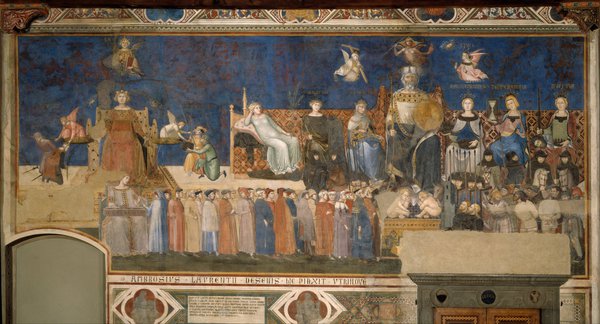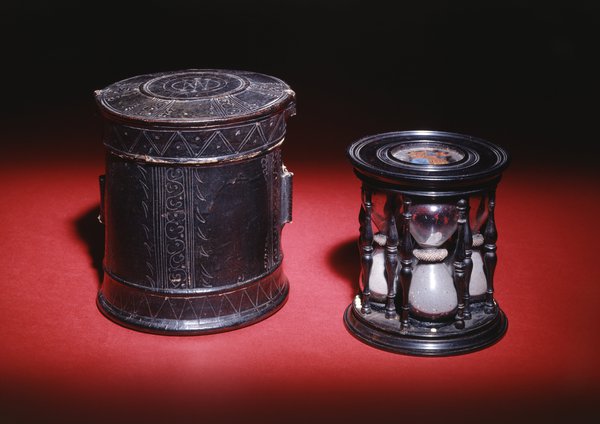The sands of time
This post was written by David Thompson
Everyone is familiar with the egg timer, but just how far back in history do these glass timers filled with free-flowing material go?
The earliest known illustration of such a device exists in an Italian fresco dating from between 1337 and 1339 in the Palazzo Publico in Siena. The fresco is called ‘The Allegory of Good Government’ and in it, one of the figures can be seen holding a sand-glass.


Before modern glass making techniques developed, sand-glasses were made using two separate bulbs bound together around a disc with a hole for the ‘sand’ to pass through. Over the centuries all manner of different materials were tried in attempts to achieve a uniform free-flowing performance.
The duration of the timer depended firstly on the amount of ‘sand’ in the glass, and secondly on the size of the opening between the two containers. The two glasses were sealed together with wax and the joint covered and tightly bound. The biggest enemy for these glasses was humidiy – damp ’sand’ was bad for business.
A particularly fine example exists in the British Museum collections, although is has a rather dubious reputation.



It is a composite glass with four separate glasses in a beautiful ebony frame and each glass is designed to run for a different period, one quarter, one half, one three quarters and last a full hour. It even boasts a leather carrying case.
At one time it was said to have belonged to Mary Queen of Scots and indeed, at the top and bottom of the frame are reverse-painted glass discs bearing the royal shield of the Tudors and the shield of France with fleur-de-lys. The idea was that this glass was owned by Mary Queen of Scots and Francis II, king of France.
Unfortunately, the Tudor arms are from the wrong period and the lion rampant in the first quarter of the shield is the wrong way round. The leather case is also roughly embellished with the monogram MF for Mary and Francis.
In spite of its later enhancement, this is nevertheless a very fine example of a late 17th century glass.
